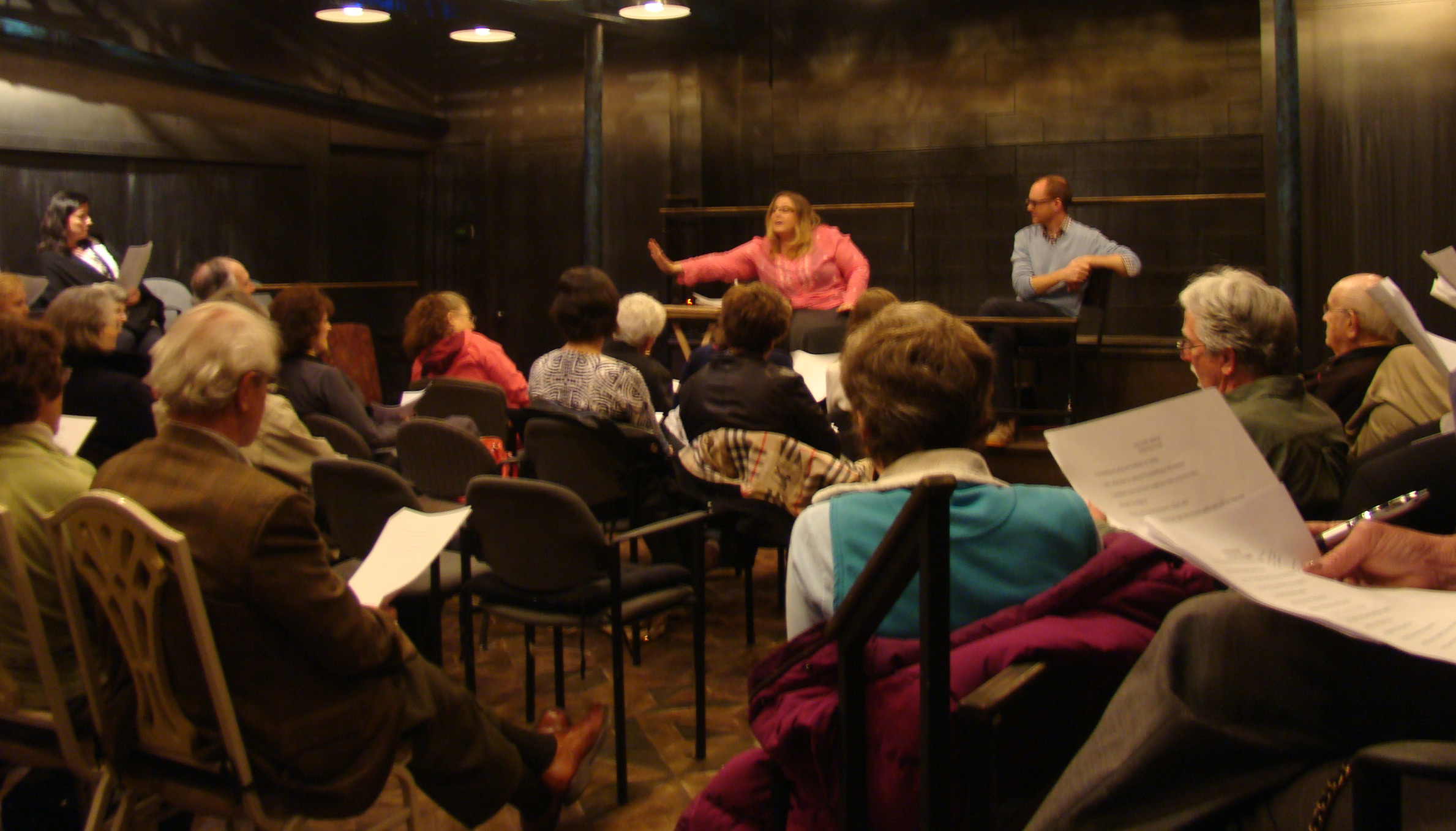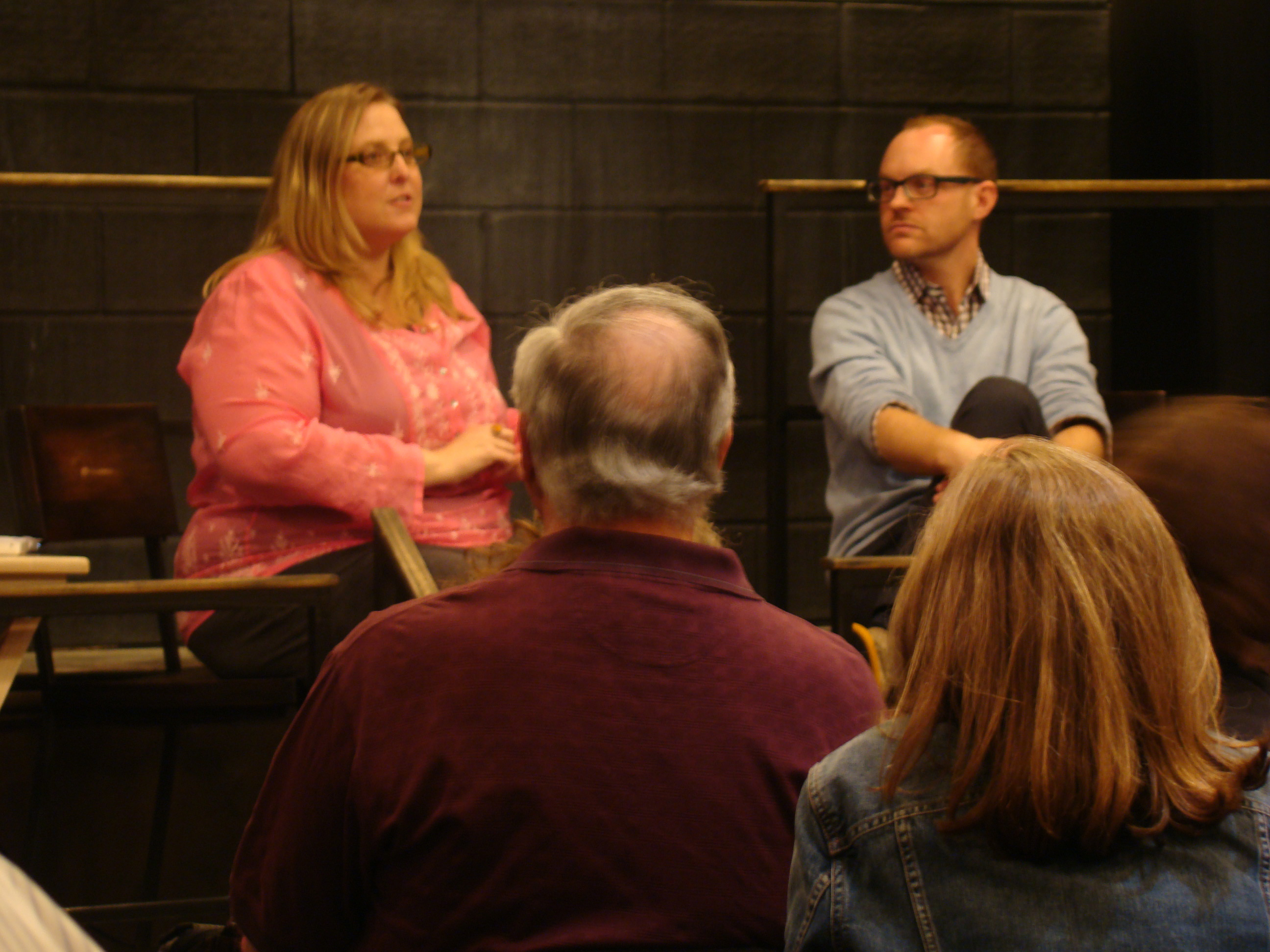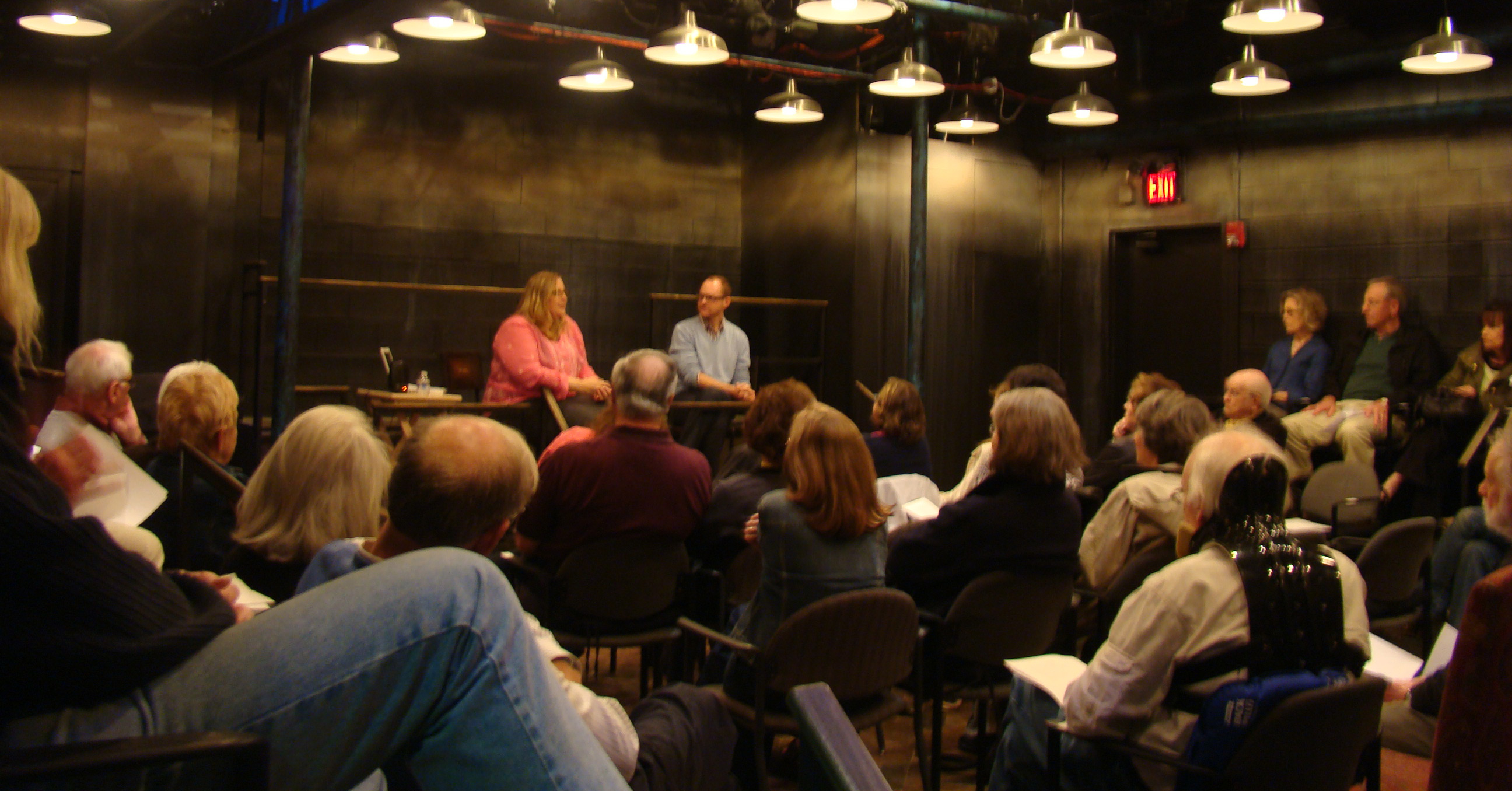 Our latest Making Of… event featured a conversation with voices from around the world– all coming out of one mouth. Eva Breneman, Dialect Coach for Yellow Moon, demonstrated a variety of dialects as well as teaching the roomful of people how to speak like they were born and bred in Scotland. It was quite a night! Here’s a quick recap, some advice, and some fun dialect resources that tickle the ear.
Our latest Making Of… event featured a conversation with voices from around the world– all coming out of one mouth. Eva Breneman, Dialect Coach for Yellow Moon, demonstrated a variety of dialects as well as teaching the roomful of people how to speak like they were born and bred in Scotland. It was quite a night! Here’s a quick recap, some advice, and some fun dialect resources that tickle the ear.
 Upon arrival, each audience member received a Dialect Breakdown for Scottish (specifically, Edinburgh & suburbs) prepared by Eva for the actors of Yellow Moon. This how-to manual included the following sections: Rhythm & Melody, Consonants, Vowels & Dipthongs, Primary Sources, Secondary Sources, and Scottish Sayings (translated into English). Everyone also received a page of some of Eva’s favorite lines from Yellow Moon.
Upon arrival, each audience member received a Dialect Breakdown for Scottish (specifically, Edinburgh & suburbs) prepared by Eva for the actors of Yellow Moon. This how-to manual included the following sections: Rhythm & Melody, Consonants, Vowels & Dipthongs, Primary Sources, Secondary Sources, and Scottish Sayings (translated into English). Everyone also received a page of some of Eva’s favorite lines from Yellow Moon.
Associate Artistic Director & Director of Yellow Moon, Stuart Carden, facilitated the evening’s conversation and Q&A. In an incredible whirlwind display of her expertise, Eva read Shakespeare’s 116th Sonnet on the spot, switching dialects every 2 lines as Stuart called them out! She effortlessly switched from Indian to Australian to Iranian to a Kentucky dialect to Scottish to British and finally to Italian!
If you think this skill for forming dialects which involves a phenomenal ear, and manipulation of the tongue, lips, cheeks, breathing, pitch, and more is something you’re either born with or not – never fear – Eva assured everyone that ear training is definitely possible.
 For Eva, becoming a dialect expert began with her pursuit of an acting career, but recognition of her incredible ear encouraged her to shift to dialect coaching. She described her unusual childhood growing up in a variety of locations around the world which fortunately exposed her ear from a young age to the sounds of a myriad of different languages and speakers. She also obtained a BFA from Tisch School of the Arts at New York University and her MA from the Central School of Speech and Drama in London.
For Eva, becoming a dialect expert began with her pursuit of an acting career, but recognition of her incredible ear encouraged her to shift to dialect coaching. She described her unusual childhood growing up in a variety of locations around the world which fortunately exposed her ear from a young age to the sounds of a myriad of different languages and speakers. She also obtained a BFA from Tisch School of the Arts at New York University and her MA from the Central School of Speech and Drama in London.
Actors come to the table of each production with a wide range of dialect experience. As a coach, Eva tackles everything from working with actors who are scared to death, have a strong sense of the sound, or have an incredible handle on a dialect – but it’s the wrong one! For example, in Yellow Moon, the dialect is that of Edinburgh and the surrounding areas and not Glasgow (which is a natural dialect for John Lister (Bill/Frank in Yellow Moon), who was born there!). This prompted the following exchange:
 Audience Question: To an untrained audience member’s ear, why is it important which Scottish dialect is used in the play (for example, an Edinburgh instead of a Glasgow sound)?
Audience Question: To an untrained audience member’s ear, why is it important which Scottish dialect is used in the play (for example, an Edinburgh instead of a Glasgow sound)?
Eva & Stuart’s Answer: “Specificity is vital to an actor,” Eva said, “It helps in finding the truth of the moment.” Stuart described the characterization process in which actors create a variety of “given circumstances” – descriptions of a character’s past and personality based on the text that the actor draws upon during a performance so that their character’s choices have a cohesive logic and motivation. Even if these circumstances aren’t necessarily conveyed directly to the audience, they are vital for the actor to define their character’s world and make their storytelling believable. Eva also mentioned that they are always “playing for that one person” – in this case, a person actually from Edinburgh who might attend Yellow Moon and the need to ensure they hear an accurate, truthful representation of the dialect in the performance.
Dialect is muscular. Eva likened learning the musculature a certain’ dialect’s sounds similar to learning a dance move or the mechanics of singing. It uses a specific part of the brain – then when you’re actually speaking, dancing, or singing – the movements become subconscious.
Whether you work with dialects professionally, want to masquerade as a local while traveling, or just enjoy giving your ears some exercise, check out the following sites:
- for samples of speakers from around the globe – International Dialects of English Archive
- explore the different sounds even among native English speakers – BBC Voices Project
- listen to speakers from all corners of the world pronounce the same word list and share their unique colloquialisms – YouTube search for “Regional Dialect Meme”
Working with incredible artists like Eva enables our productions to shine. We love giving you up-close access to these artists and their contributions to our shows through our Making Of… series. Be sure to find us on Facebook and follow us on Twitter for info. on our next event where we’ll take you behind the scenes of The Liar.


No comments yet.